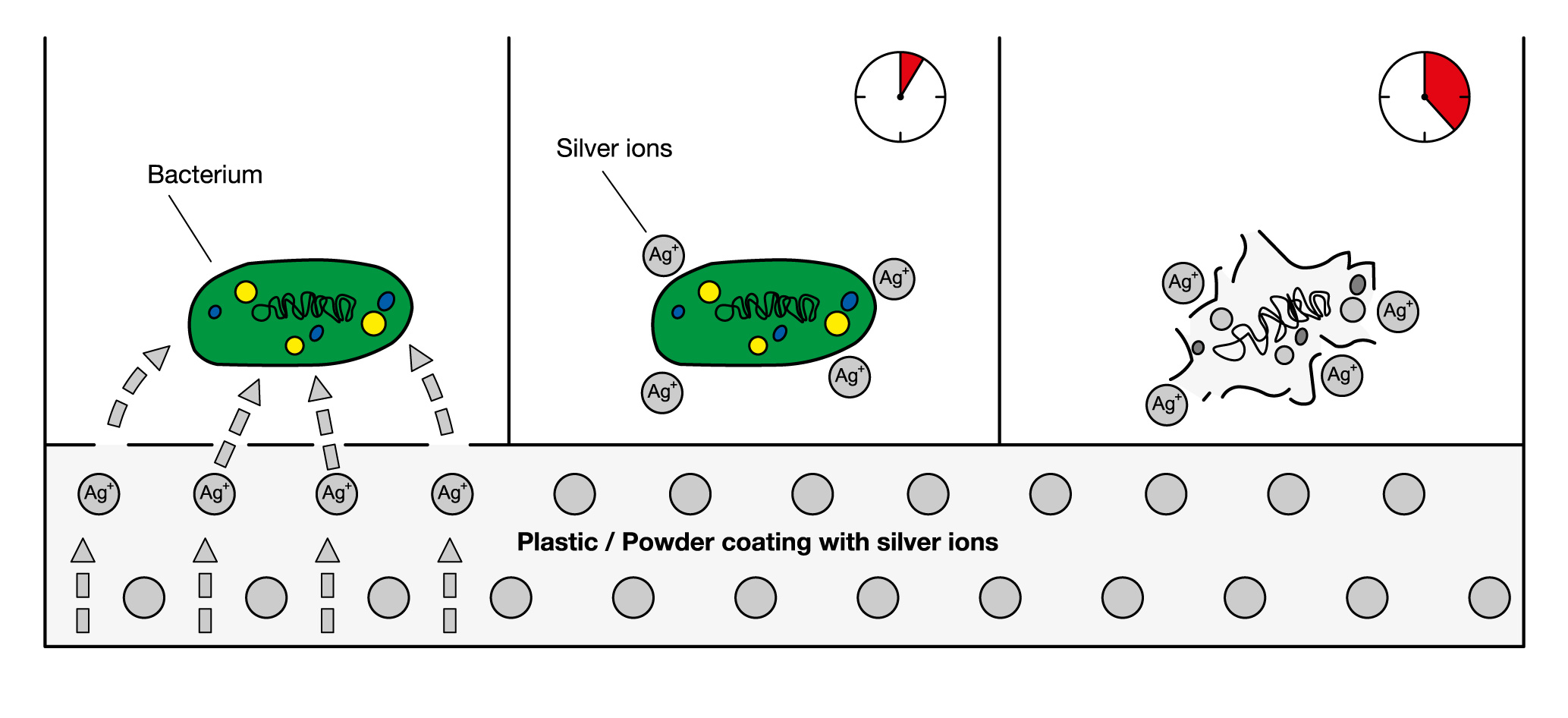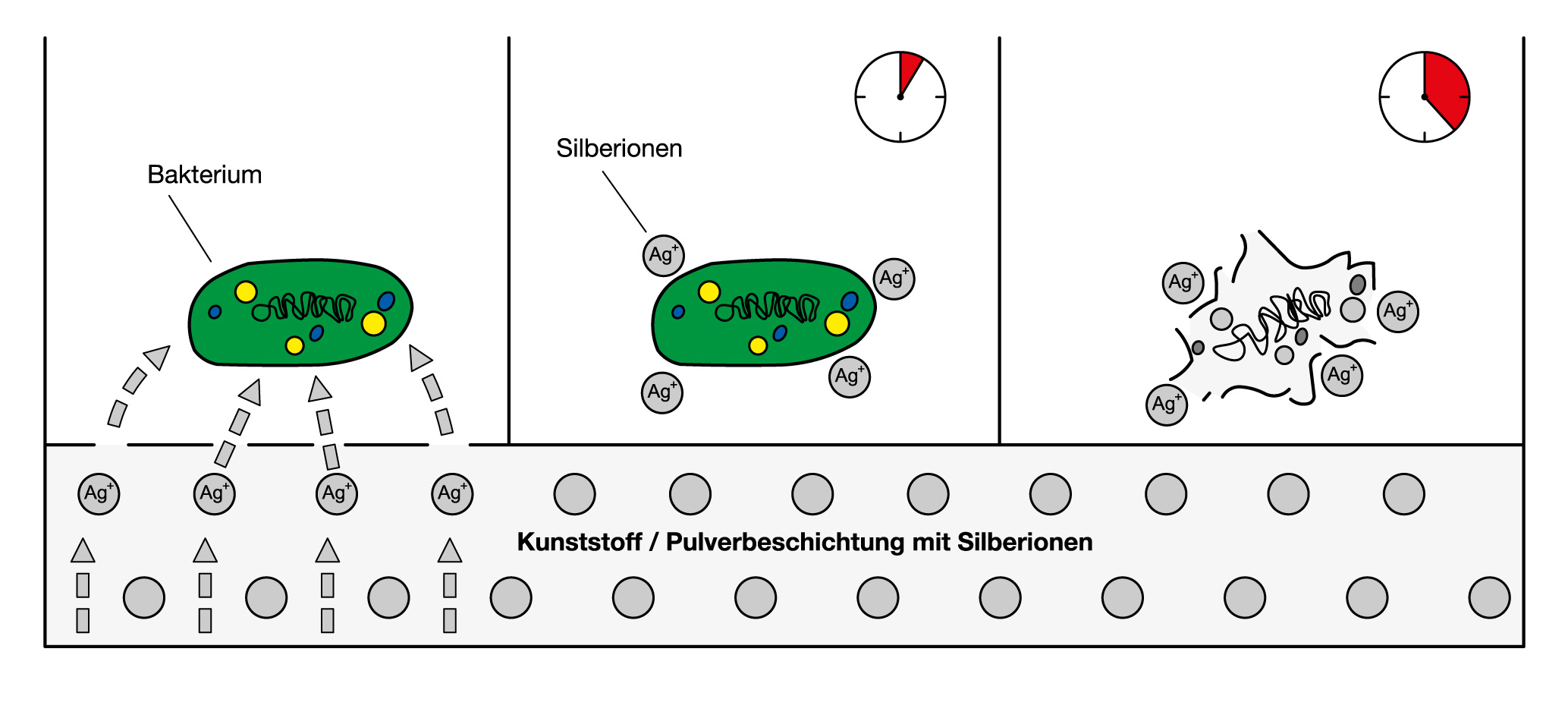Functioning principle
Plastics or powder coatings manufactured with silver ions inhibit the establishment and proliferation of pathogens on the surface. The effect is based on a natural principle and remains continuously effective for a long time.
Silver ions (Ag⁺) diffuse from the plastic surface and attach to the cell walls of the microbe. After a short time, the silver ions break through the cell wall of the microbe and destroy the enzyme activity within the cell. The genetic material of the microbe is attacked, preventing further cell division and eventually killing off the germ.


Laboratory tests
The plastics or powder coatings of the Sanline standard parts were tested by an accredited testing laboratory on the following microorganisms:
The principle of action has been shown to reduce the growth of bacteria and fungi within 24 hours so that the surfaces ultimately exhibit less than 1% of the original microbial contamination. In the case of viruses, the contamination is reduced to below 5%.



